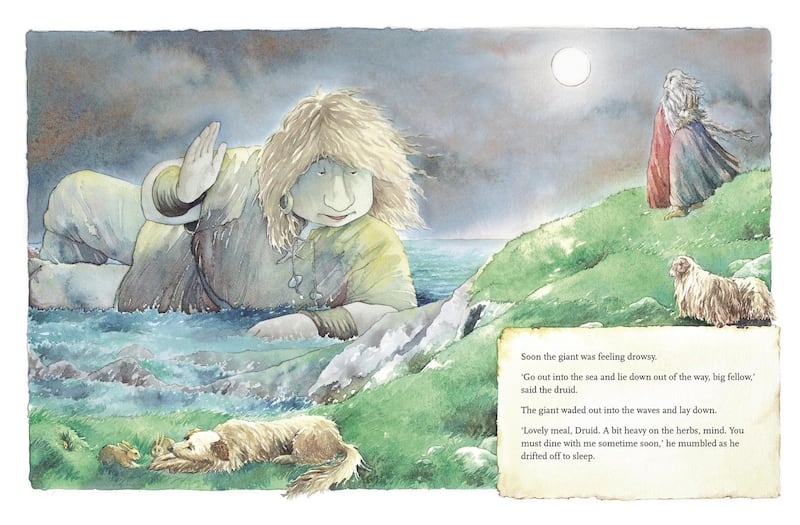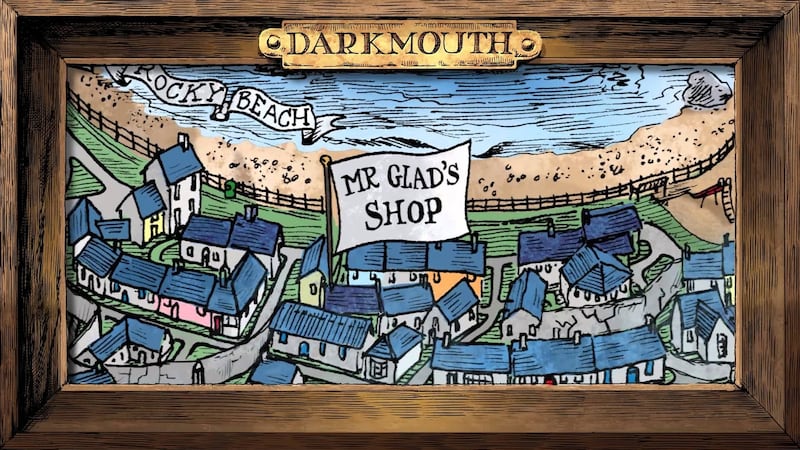In Sarah Bowie's charming picture book Let's See Ireland, the protagonist, Molly, embarks upon a national tour with her parents and a stowaway cat. As the family journey across the country, they make pit stops at various heritage sites, from the Rock of Cashel to the Cliffs of Moher. With its travelogue structure, the book invites you to enumerate the places you have been and make plans for future family adventures.
As the summer holidays begin, it can be difficult to sustain the structure of daily reading sessions that school demands. The sorts of extracurricular exploits suggested by a story like Bowie’s offer a canny way of encouraging a deeper engagement with books. What imaginative young soul would not squeal at the sight of their favourite character’s favourite place, or the site of a fictional hero’s tragic death? So pick up a book, find an atmospheric place to read it, and embark on a literary adventure with your young reader. Whatever you do, though, don’t call it homework.
The Lion, the Witch and the Wardrobe by CS Lewis
Kilbroney Park, Rostrevor, Co Down
CS Lewis grew up in Belfast and spent his childhood holidays in Rostrevor, a small town on the coast of Carlingford Lough that he described as "my idea of Narnia". The mountains that loom above it made Lewis "feel that at any moment a giant might raise its head over the next ridge". The modern visitor will find it similarly enchanting. At Kilbroney Park, a neat Narnia trail will bring you through a wardrobe and into the world of Lewis's chronicles, meeting Tree People, patterwigs and beavers along the way. For a less literal journey through the book, climb the vertiginous slopes of Slieve Martin to Cloughmore, the granite boulder – thrown there by Fionn MacChumhaill as legend has it – that is a perfect model for Aslan's altar. Three hundred metres above Rostrevor, the final chapters of The Lion, the Witch and the Wardrobe come to life in a new way: "They were on a green open space from which you could look down on the forest spreading as far as one could see in every direction . . . There, far to the East, was something twinkling and moving. 'By gum!' whispered Peter to Susan, 'the sea!' In the very middle of this open hilltop was the Stone Table . . . a great grim slab of grey stone supported on four upright stones." Try to imagine the creatures that worship there – the Well Women, centaurs and unicorns – and, of course, "the great, royal, solemn" Aslan. Do yourself a favour, though: skip the passage of his death.
The Sleeping Giant by Marie-Louise Fitzpatrick
Inis Tuaisceart, Co Kerry
"Off the coast of Ireland there lies an island. It looks like a giant sleeping in the sea . . ." This is the premise for The Sleeping Giant, Marie-Louise Fitzpatrick's book about the myth surrounding Inis Tuaisceart, off the coast of the Dingle Peninsula, which is known by locals as the Sleeping Giant or the Dead Man. According to legend, the island was formed when a giant was put to sleep by a druid under the instruction of the king of Kerry. Fitzpatrick brings the giant back to life, where, despite his friendly demeanour, he terrifies everyone and the tourist board has to intervene. The best place to view Inis Tuaisceart is the cliffs of Dunquin, where you can trace the shape of the supine giant without stretching your imagination too far, and take a boat journey to explore the Blasket Islands. Afterwards, see if you can spot the seals on the rocks near Coumeenole beach, where the giant comes ashore after waking from his slumber. Then try to find his hermit friend at the Gallarus Oratory, before settling down in any of the local pubs, where the giant just might be peeking in the window as you eat your crisps and drink your lemonade.

A Dublin Fairytale by Nicola Colton
Dublin city centre
Nicola Colton reroutes Little Red Riding Hood's journey to the urban wilderness in this amusing modern fairy tale for very young readers. Little Red's real name is Fiona, and as she sets off across the city to her granny's house with her basket, she must avoid various dangers, not just the Big Bad Wolf in a shiny tracksuit who stalks her on his bike. There are giants in St Stephen's Green, a troll is guarding the Ha'penny Bridge and a dragon has wrapped its tail around the Spire. The last leg of Fiona's journey takes her to Moore Street market, where she picks up some ingredients for Granny's favourite brew: follow suit by buying some fruit and veg for a snack, the more exotic the better. Colton's inventive book provides a perfect yardstick for tired short legs walking through the city ("Look: there's Trinity College of Sorcery"). As a reward for all the reading and walking, settle down in the Giant's Garden in Merrion Square, where the sculptural playground offers a large hand that is perfect for a small bottom to sit and hear a different fairy tale – Oscar Wilde's The Selfish Giant – for the first time.
Mrs McCool and the Giant Cuhullin by Jessica Souhami
The Giant’s Causeway, Co Antrim
"Long ago, there lived a giant called Cuhullin. My, but he was big and fierce and strong. And what made him so strong? He had a magic finger . . . Now Cuhullin had fought all the other giants, and squashed them flat. Well, all but one, and that was Finn McCool." Ignoring the phonetic approach to the Irish language, Jessica Souhami's version is a particularly vivid telling of the famous legend associated with the Giant's Causeway, the improbable basalt columns that rise out of the sea on the north Antrim coast. With its vivid, block-printed illustrations and lucid text, it shifts narrative perspective to Oona, Finn McCool's wife, offering a more objective narration of the dramatic battle between the giants. Skip the (expensive) Giant's Causeway visitor centre and let your reading guide your interpretation instead. Imagine how strong the giant must have been to have hurled the stones so far into the ocean. Imagine the size of a giant who would fill the stone boot, discarded so carelessly among the slippy stones. Imagine sinking your teeth into one of the rocks, as the Scottish giant does, when tricked by the wily Mrs McCool. It is difficult to know which is the more mythical: the legend or the landscape itself.
Darkmouth by Shane Hegarty
Skerries, Co Dublin
Darkmouth is the last of the Blighted Villages, a small town that serves as a gateway for legends, mythical creatures who are keen to escape the oppressive alternative universe in which they have been trapped for centuries. With its "colourful little ice-cream shop on the harbour, benches dotted along the strand, picnic tables and fun climbing frames for the kids", Darkmouth is modelled on Hegarty's hometown of Skerries, and fans of the legendary Hunter Finn and his sidekick, Emmie, will enjoy exploring the landmarks on the Skerries seafront that Hegarty has snuck into the book. James de la Rue's maps at the start of each book in the series help to shape an itinerary. Arrive by train, of course, and imagine you are coming from nearby Slotterton. Visit the Monument, and look for secrets inside, as Finn and Emmie are forced to do in Darkmouth: Chaos Descends. Explore the Rocky Shore before hiking up to Look Out Point: see if you can spot Finn and Emmie's houses on the terraces below you. After a bit of fantasy role play, it must be time for ice cream. Stop at Storm in a Teacup, which has been known to offer themed cones to Darkmouth fans: a scoop of Mint Legend, anyone?














